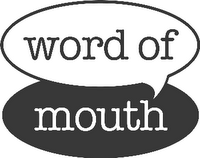 In my class on Word of Mouth, Buzz, and Viral Marketing Communication I was fortunate to have Jackie Huba visit. Jackie and Ben McConnell, her co-author, are on tour discussing their new book Citizen Marketers: When People Are the Message. A fascinating part of our discussion during her visit was about the role of social media and how companies should respond to citizen marketers (those who generate their own content and advocacy for and about companies).
In my class on Word of Mouth, Buzz, and Viral Marketing Communication I was fortunate to have Jackie Huba visit. Jackie and Ben McConnell, her co-author, are on tour discussing their new book Citizen Marketers: When People Are the Message. A fascinating part of our discussion during her visit was about the role of social media and how companies should respond to citizen marketers (those who generate their own content and advocacy for and about companies).
Jackie believes the true power in social media lies in its ability to foster long-term loyalty and advocacy between companies and customers. While shorter-term campaigns that accomplish strategically important goals have their place in the mix, she feels that ultimately social media and the contributions of citizen marketers is a long-term process of engagement and dialogue. This is what lies behind, at least in part, the following statement in their book: "Social media is the antidote to campaign-based thinking" (p. 172).
Another fascinating part of our discussion was how companies should respond to the contributions of citizen marketers. I set the context for the question by giving the example of how McDonald's has responded to the contributions of McChronicles (a blog that was discussed in the Citizen Marketers book). I then asked Jackie if there were any guidelines she could offer companies about if and how to respond. She said that each case comes with its own set of opportunities and constraints but that there were at least two principles that could be generalized.
First, find out if you have citizen marketers and what they are saying and doing (most companies are surprised to learn of their advocates and detractors actively working for or against their brands).
Second, if you do (and most companies do!), consider reaching out to them, say that you saw their contributions (for example, it may be a blog or podcast), thank them for their contributions, and ask them if there's anything the company can do to help them with their efforts (or, to address concerns if there are detracting comments). Sometimes the company may not be able to help the citizen marketers in the way they might want (for example, certain legal matters might restrict them), but some times they can. And sometimes the citizen marketer expects nothing.
For example, according to my brief e-mail interview with the author of the McChronicles blog at the end of January 2007, the author responds to my question of what type of response he is looking for from McDonald's, if any. He writes:
I expect nothing. I hope only that the voice of the faceless, average fast-food consumer is heard. I feel that what we want is simple - delivery on the promise. We don't go to McDonald's for tire balancing or for exceptional table service. They have never promised either. What we want is Quality (in the realm of fast-food), Service (in the realm of fast-food), Cleanliness (in the realm of known and standard sanitary practices), and Value (when compared to all the competition). Why? Becasue QSCV is McDonald's mantra - they taught us to expect this.I think this is precisely Jackie's point about social media. Any social media efforts have to be part of a broader effort of long-term loyalty and advocacy which is fundamentally about a social contract between companies and consumers (and other stakeholders I might add, such as community members affected by what the company does).
The two points Jackie raises about different ways of engaging in customer conversations fit very nicely into an informal model I've been developing, with the help of others, about different levels of engagement and involvement with social media. I invited those interested to read and comment on that post as well.
This post is derived from a post on my teaching blog.
-->
Tags: WOM word of mouth Word-of-Mouth Marketing buzz marketing viral marketing marketing communication citizen marketers engagement









